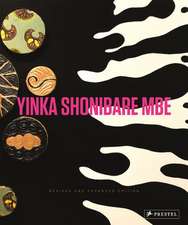Massimo Scolari: The Representation of Architecture, 1967-2012
Editat de Editors of Skira Booksen Limba Engleză Hardback – 31 ian 2012
Preț: 253.30 lei
Nou
Puncte Express: 380
Preț estimativ în valută:
48.48€ • 50.50$ • 40.31£
48.48€ • 50.50$ • 40.31£
Carte disponibilă
Livrare economică 20 ianuarie-03 februarie 25
Preluare comenzi: 021 569.72.76
Specificații
ISBN-13: 9788857212593
ISBN-10: 8857212599
Pagini: 240
Ilustrații: 246 COLOR
Dimensiuni: 172 x 248 x 36 mm
Greutate: 1.36 kg
Editura: Skira - Berenice
ISBN-10: 8857212599
Pagini: 240
Ilustrații: 246 COLOR
Dimensiuni: 172 x 248 x 36 mm
Greutate: 1.36 kg
Editura: Skira - Berenice
Recenzii
“Scolari’s paintings speak impassively, without rancor or remorse, for an impossible modernism that had kindled all of our young hopes with a passion for a better world. To live out these impossible dreams is not for Scolari. Unlike Tafuri’s etui-menschen, who decorate the interiors of their attic prisons with layers of futile complexity, Scolari’s disillusioned gaze countenances no such remedy. It remains steadfast and clear, reminding us that architecture is nothing else but the symbols that have stood for centuries, only now tumbled over and fractured by the wry hand of his intelligence.” ~Peter Eisenman~
“In his concentration on the logic of representation, Scolari detaches the discipline from some of its customary practices of embodiment, construction, and realization. This is important today, at a moment when a prevailing emphasis on digital technology and constructive technique has tended to obscure the role played by the imagination in the design and production of architecture. More specifically, Scolari’s approach has revealed, if only implicitly, the unexpected significance of drawing, and more generally, the uses of a whole range of representations that can be produced by the hand of the architect.” ~Daniel Sherer~
“In his concentration on the logic of representation, Scolari detaches the discipline from some of its customary practices of embodiment, construction, and realization. This is important today, at a moment when a prevailing emphasis on digital technology and constructive technique has tended to obscure the role played by the imagination in the design and production of architecture. More specifically, Scolari’s approach has revealed, if only implicitly, the unexpected significance of drawing, and more generally, the uses of a whole range of representations that can be produced by the hand of the architect.” ~Daniel Sherer~




